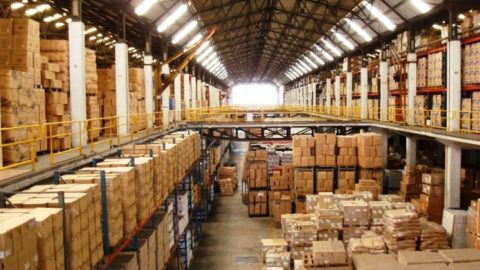
Advanced inventory management tools can help your supply chain management (SCM) company better track inventory
Supply chain management trends adapting to global trade, developing green supply chains, robotizing supply chains, replacing linear supply chains with cyclic supply chains, etc, are Supply chain management trends that businesses (DN) need to understand to keep all components of the supply chain running smoothly to ensure that businesses provide services and products on time.
Mr.Julien Brun – General Director of CEL Consulting said: supply chain management (SCM), inventory management, ensuring all supply chain components operate smoothly so that businesses can provide services. Timely products and products are important goals in a business’s supply chain management. According to a survey by CEL Consulting 79% of companies with high performance supply chains achieve steady growth in revenue. Supply chain management trends have also been suggested by experts so that businesses are best prepared to adapt to these changes in the future.
Supply chains, in particular, are moving greener as the growing consumer efforts to be more environmentally responsible push the supply chain less harmful to the environment. Electricity and transportation contribute greatly to greenhouse gas emissions, so green logistics services are being focused on by many businesses. With green consumerism on the rise, many companies are expected to implement environmentally friendly supply chain processes in the coming years.
In addition, linear supply chains will soon be replaced by cyclic supply chains, where manufacturers refurbish discarded products for resale. In response to the rising costs of raw materials many companies choose to break down their products and turn them back into raw materials. Supply chain loops can help cut costs. With the circulating supply chain, companies can spend less on raw materials and, in turn, reduce the risk of price fluctuations. Furthermore, the circulating supply chain generates less waste, helping companies reduce their overall environmental impact.
More components are added to the supply chain, as companies seek to collaborate and build integration with third parties. Partnering with third party services can help companies reduce costs while improving customer service. For example, many businesses will integrate and start providing domestic services, reducing general freight costs and streamlining the supply chain. Integration is especially useful for shippers who often use a combination of sea and land shipping for their products. With integrated services, delivery times become shorter and customer service is improved.
Robotics now plays a huge role in transforming supply chain and SCM. According to a CEL Consulting survey in 2019, North American companies spent $ 869 million on more than 16,400 robots. Today, many companies are using drones and drones to streamline logistics operations. Companies and consumers can expect drones to become fully capable of making small deliveries. Self-driving cars are also likely to get more advanced in 2020, with the ability to make autonomous traffic decisions. Advances in technology give business owners many ways to optimize their supply chains to ensure everything runs smoothly. Enterprises plan their supply chains to ensure that their business supply chains are flexible enough to handle the effects of factors such as global trade problems and a shortage of workforce.
Reality in the current supply chain development process shows that when the product life cycle is shorter, it requires businesses to review their supply chain and a reasonable production process to ensure that businesses can keep up with the replacement demand. regular exchange for new products. Advanced tools such as inventory management can help supply chain managers (SCM) better track inventories and stocks. In addition, many companies will also implement “reverse logistics” reverse logistics processes to improve the handling of outdated products. The current fact is that 43% of small businesses track inventory manually or completely do not track inventory, this is a limitation that directly affects business performance of businesses.
In addition, new tariffs and global trade issues require companies to be faster, more flexible, and more resilient in planning supply chain development. To ensure stability and maintain a high level of service, companies must have a plan to keep up with supply chain development trends, said Mr.Julien Brun.
Productivity and Quality Office